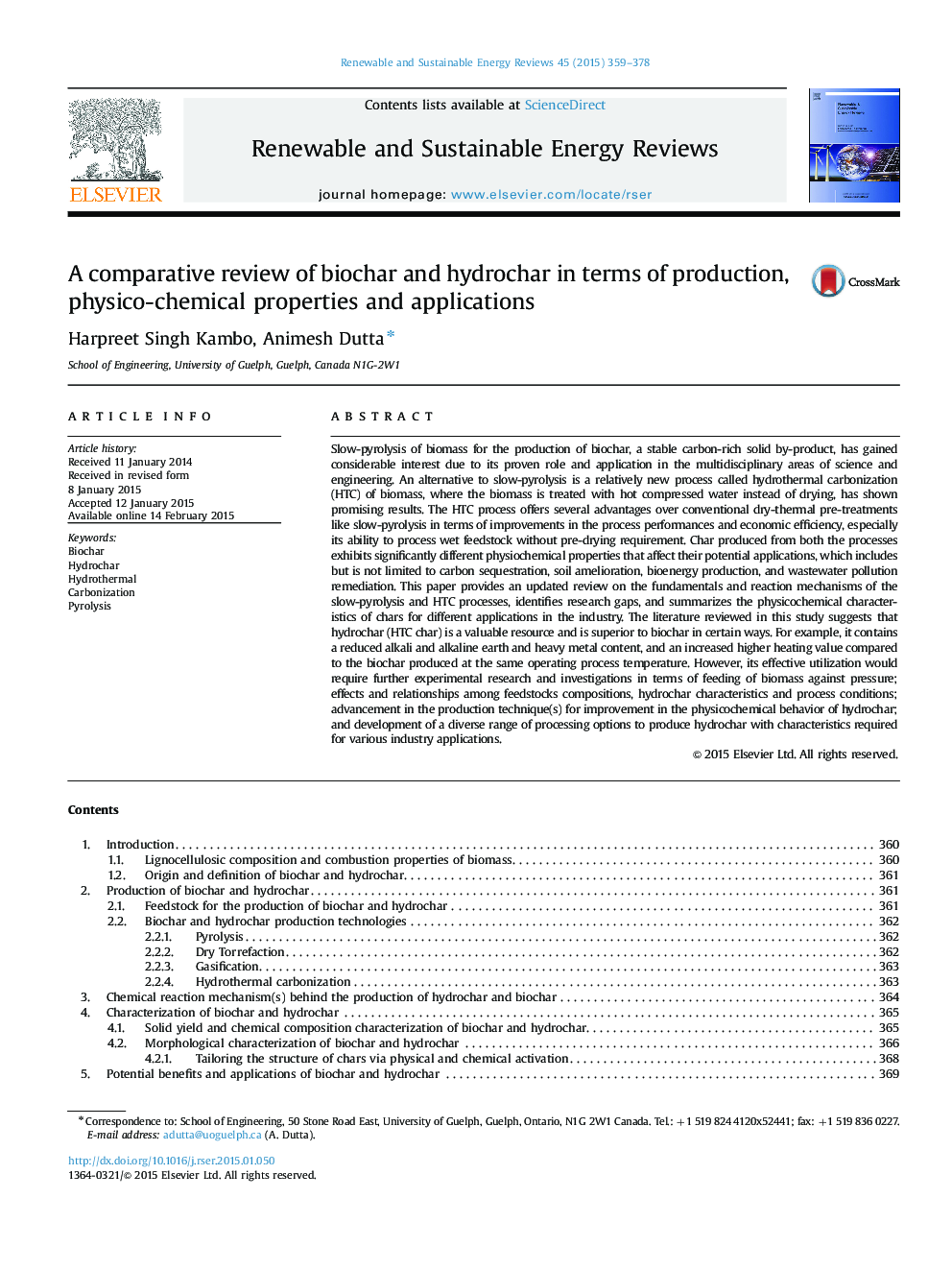| کد مقاله | کد نشریه | سال انتشار | مقاله انگلیسی | نسخه تمام متن |
|---|---|---|---|---|
| 1750055 | 1522340 | 2015 | 20 صفحه PDF | دانلود رایگان |
Slow-pyrolysis of biomass for the production of biochar, a stable carbon-rich solid by-product, has gained considerable interest due to its proven role and application in the multidisciplinary areas of science and engineering. An alternative to slow-pyrolysis is a relatively new process called hydrothermal carbonization (HTC) of biomass, where the biomass is treated with hot compressed water instead of drying, has shown promising results. The HTC process offers several advantages over conventional dry-thermal pre-treatments like slow-pyrolysis in terms of improvements in the process performances and economic efficiency, especially its ability to process wet feedstock without pre-drying requirement. Char produced from both the processes exhibits significantly different physiochemical properties that affect their potential applications, which includes but is not limited to carbon sequestration, soil amelioration, bioenergy production, and wastewater pollution remediation. This paper provides an updated review on the fundamentals and reaction mechanisms of the slow-pyrolysis and HTC processes, identifies research gaps, and summarizes the physicochemical characteristics of chars for different applications in the industry. The literature reviewed in this study suggests that hydrochar (HTC char) is a valuable resource and is superior to biochar in certain ways. For example, it contains a reduced alkali and alkaline earth and heavy metal content, and an increased higher heating value compared to the biochar produced at the same operating process temperature. However, its effective utilization would require further experimental research and investigations in terms of feeding of biomass against pressure; effects and relationships among feedstocks compositions, hydrochar characteristics and process conditions; advancement in the production technique(s) for improvement in the physicochemical behavior of hydrochar; and development of a diverse range of processing options to produce hydrochar with characteristics required for various industry applications.
Journal: Renewable and Sustainable Energy Reviews - Volume 45, May 2015, Pages 359–378
